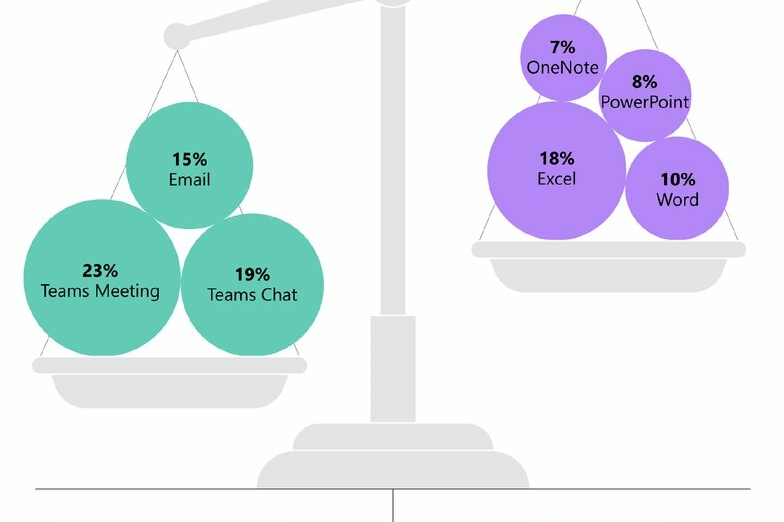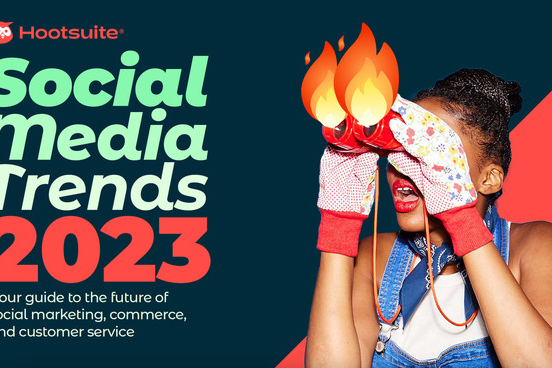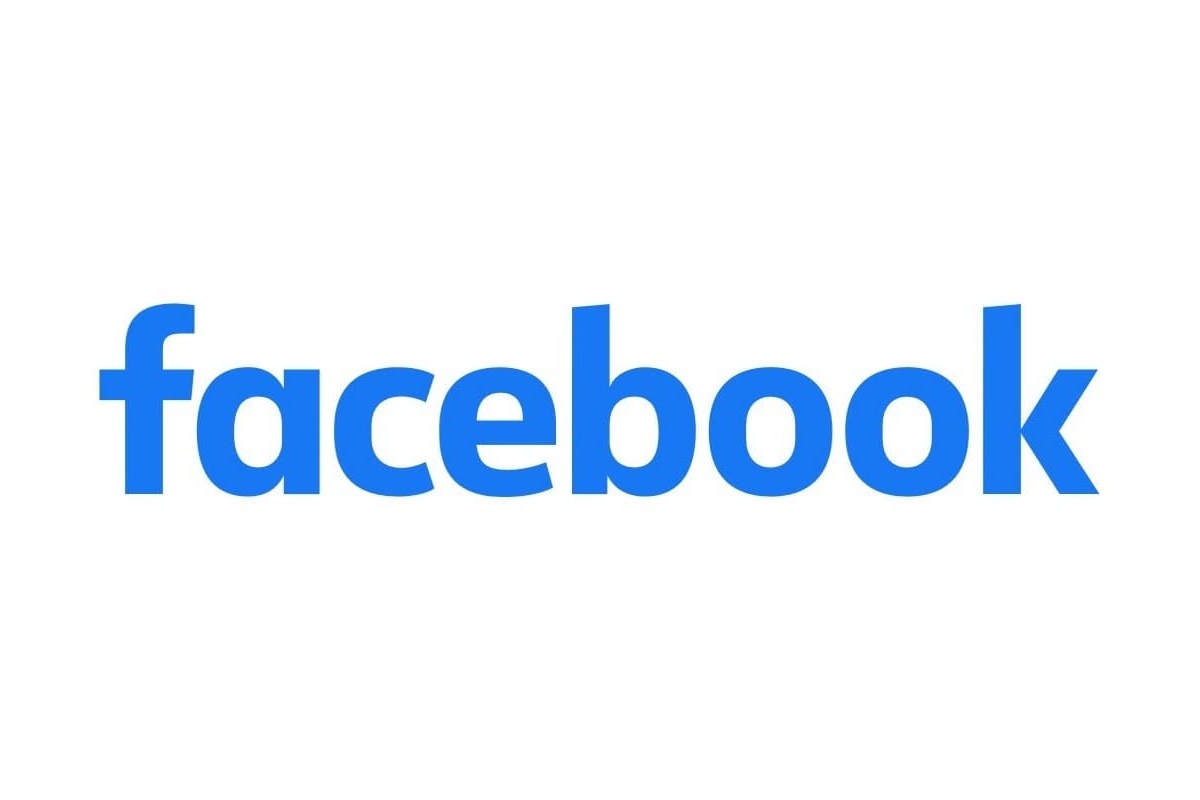Each year, GWI interviews over 700,000 internet users via an online questionnaire for its Core data set. Connecting the dots 2022 unpacks the motivations and reasons behind the big changes.
The pursuit of purpose
Consumers are looking for more from life in the post-pandemic world
We’ve got 16,790 days from becoming an adult to reaching retirement
The pandemic not only changed how we work, but why we work as well. Employees are increasingly concerned with how they can make those 16,790 days worth their time. Nailing that should be the priority of every business striving to be on the winning side of the talent war in the year ahead.
For B2C brands and marketers, this is a great opportunity to support consumers’ pursuit of purpose and rethink the way you speak to your audience. Encouraging consumers to step out of their comfort zone and design campaigns that inspire and nurture a sense of limitless possibilities will be key.
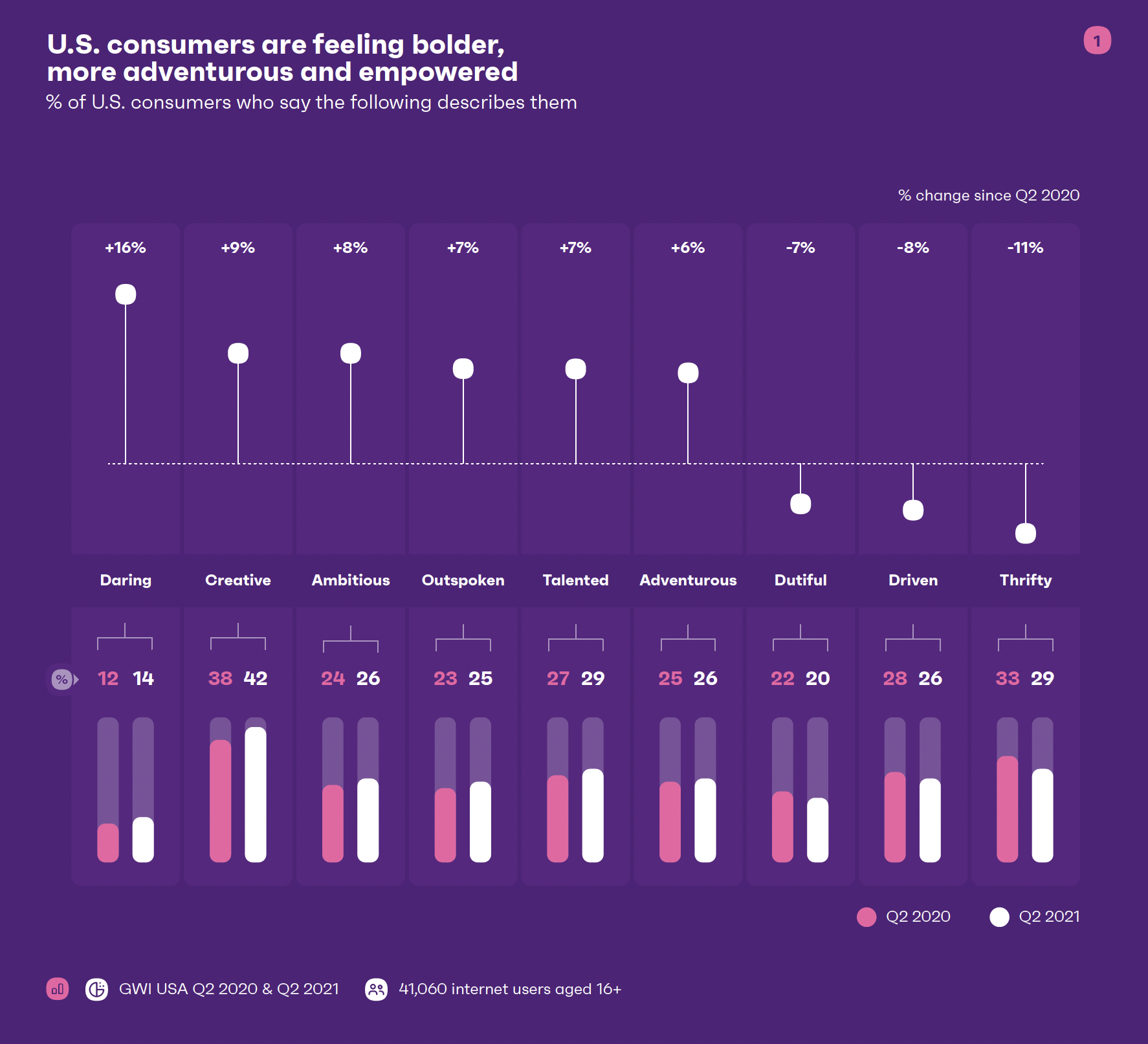
One fruitful way for brands and marketers to stand out in the year ahead would be to align their messaging and tone of voice with this new outlook. “You only live once” (YOLO) campaigns that nurture consumers’ new aspirations are likely to resonate the most.
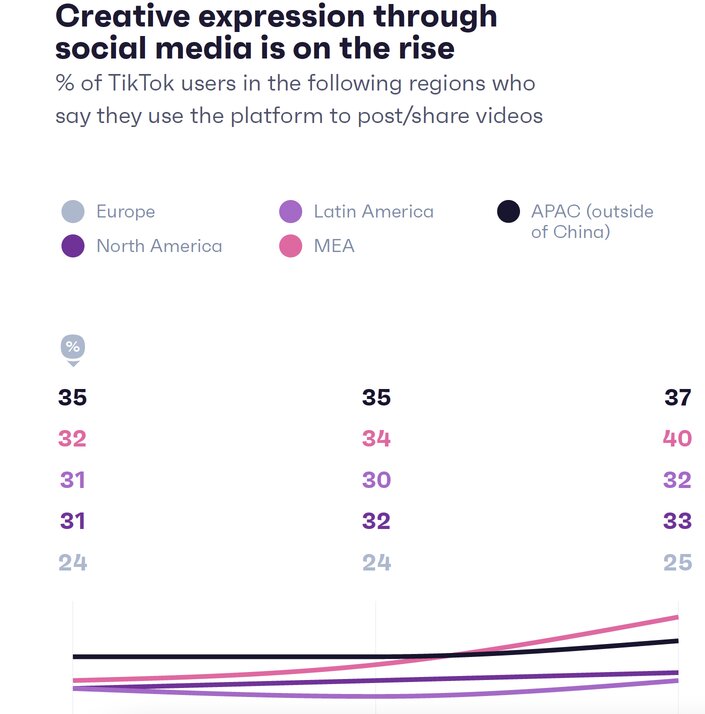
Creative expression through social media is on the rise
The newly revitalized YOLO mentality we’ve seen with consumers manifests
itself in the workplace through the search for meaning and happiness. Those looking to quit their jobs are 36% more likely than average to want to do more meaningful work and 31% more likely to want work that makes them happier.
The bottom line is employers need to reduce the mundane tasks typically given to younger employees and focus on nurturing a sense of fulfilment and purpose. Long gone are the days when the hours clocked are more valuable than the results produced. Creating a culture where employees are given the freedom to blend their passions with their work, regardless of seniority, is key.
The desire for novelty trumps Security
People feel empowered and confident to challenge the status quo and pursue what truly brings them joy, even if that means sacrificing stability. A whopping 74% of job hunters are actually satisfied with their current role, meaning the desire for novelty trumps security. Working just for the sake of it is now largely seen as a waste of valuable time.
Attention Deficit
By some measures, the attention recession is already here. Q2 2020 of GWI’s Core research saw an unprecedented spike in virtually all media activities, prompted by widespread lockdowns. This then died back, and we’re now in a kind of interim period where it’s not immediately clear if they’ll return to their previous levels, or reach new heights.
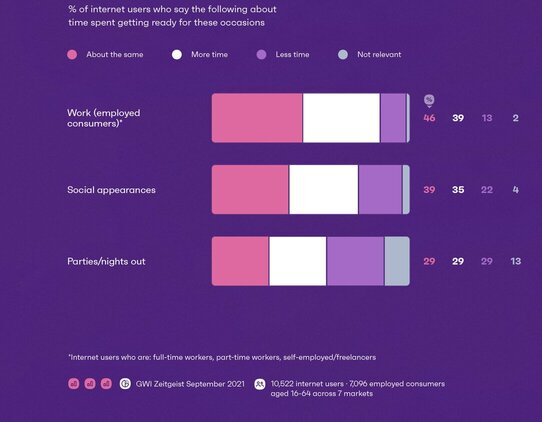
But while time spent is a useful metric, it’s only part of the picture. Without
understanding how consumers feel, you’re unlikely to know their next move, the reasons behind it – or what to do about it. With that in mind, a good place to start is news.
Self-Care
For brands, advancing the mental health conversation could involve messaging around the importance of taking some time out of our days to do something enjoyable, trying something new, or just to reset. Brands should consider how their activities could be a part of healthy me-time.
Close to 30% of Gen Z and millennials say they’re taking more breaks from work. Many are also spending less time on social media, saying “no” to social activities to focus on themselves, or spending less time reading news in a bid to manage their mental wellness.
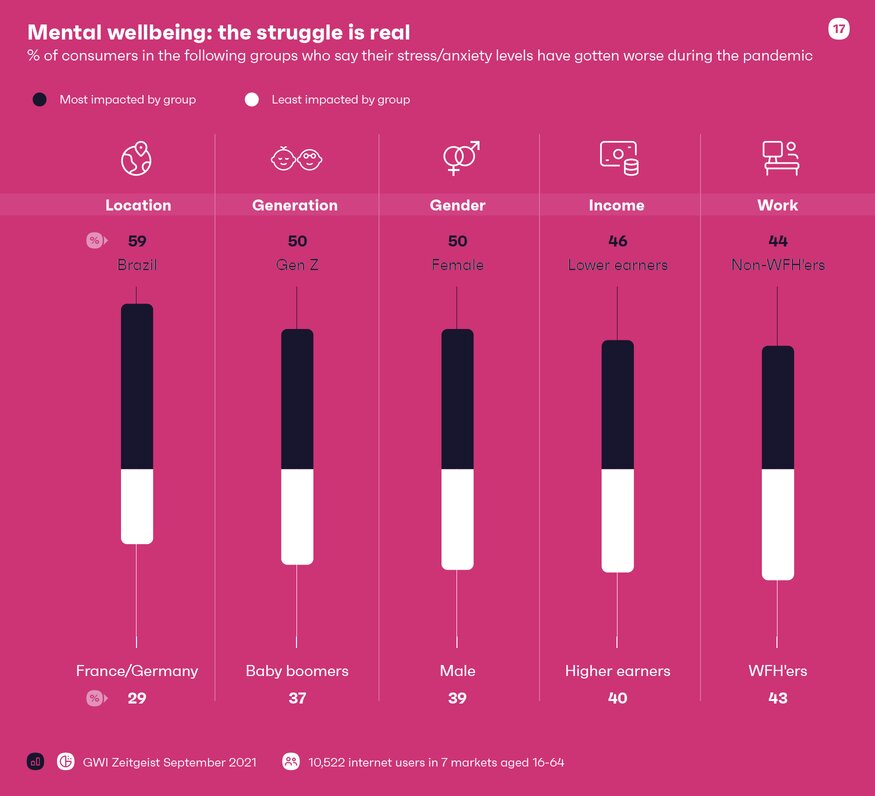
Close to 30% of Gen Z and millennials say they’re taking more breaks from work. Many are also spending less time on social media, saying “no” to social activities to focus on themselves, or spending less time reading news in a bid to manage their mental wellness.
Need help with developing a digital strategy for your business? Get in touch.
